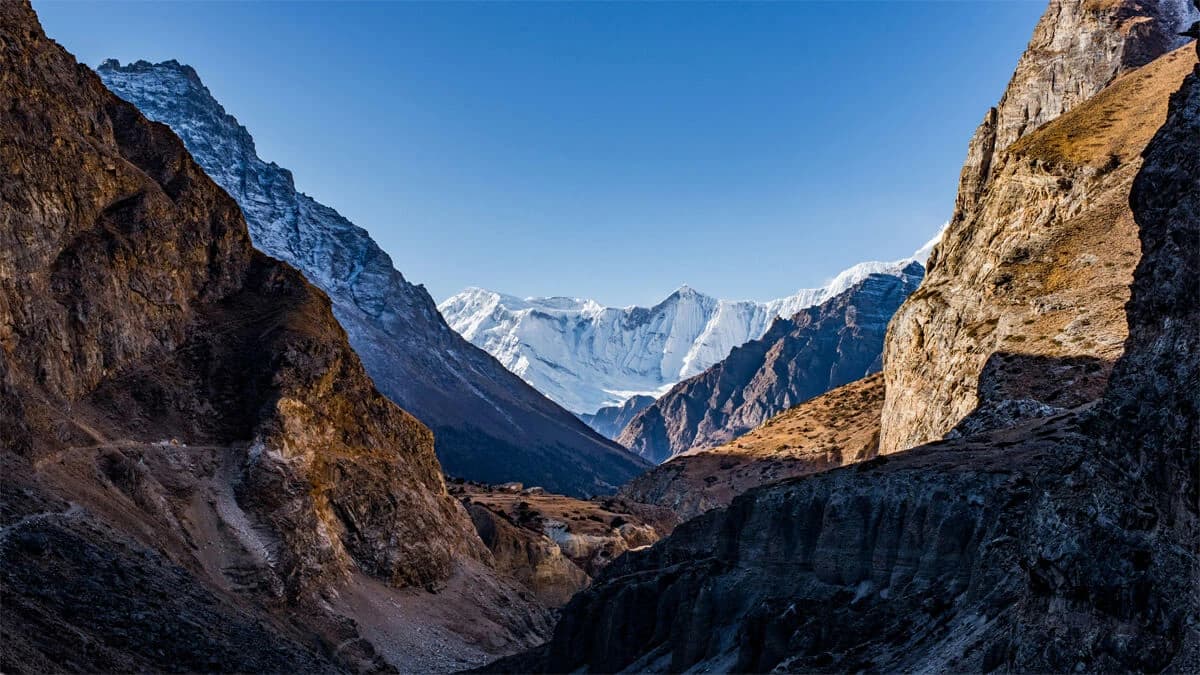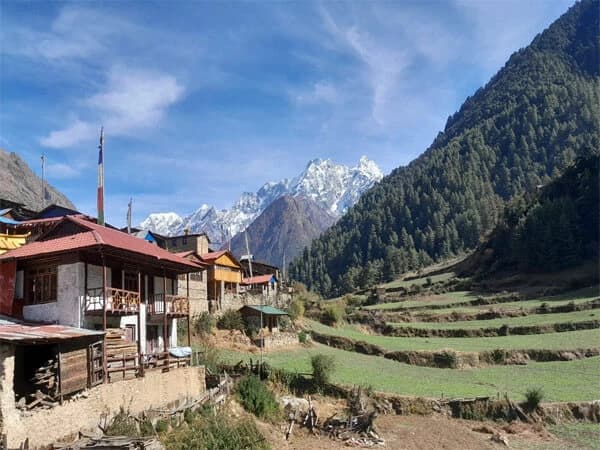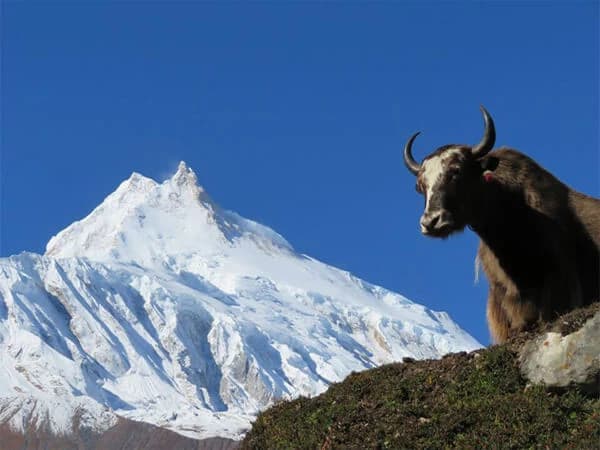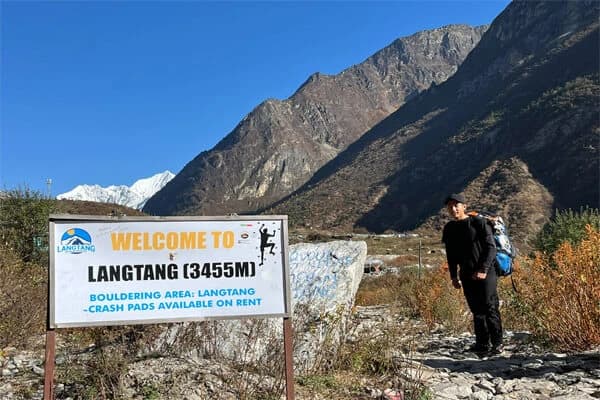Mountain trekking in Nepal provides an unforgettable adventure, combining stunning Himalayan vistas, rich culture, and a variety of trekking routes for all skill levels. Everest, Annapurna, Langtang, and Manaslu are popular destinations, each with its own set of beauty, settlements, and spiritual experiences. Treks range from simple to difficult, with spring and autumn being the best months for clear skies and good weather. Guided hikes improve safety, cultural understanding, and logistical support, particularly on remote or high-altitude routes.
Mountain Trekking in Nepal: Best Himalayan Treks & Adventure Trails
Have you ever dreamed of standing beneath the majestic peaks of the Himalayas, surrounded by clouds, crisp mountain air, and never-ending panoramic views? Mountain trekking in Nepal allows you to immerse yourself in some of the world's most stunning vistas while also discovering varied cultures, secluded communities, and old traditions. Nepal is home to eight of the world's fourteen highest peaks, including Everest, Annapurna, and Kanchenjunga, making it a popular destination for trekkers and mountaineers of all skill levels. From short, family-friendly hikes to tough high-altitude excursions, Nepal has something for every traveler looking for the excitement of the mountains.
Not only do Nepal's peaks stand out, but so does the journey. Trails wind through rhododendron forests, glacial rivers, and Sherpa villages, allowing trekkers to connect with local culture and gain firsthand experience in the high Himalayas. The trekking infrastructure, which includes teahouses, guides, and porters, makes even isolated routes accessible to those who are prepared to prepare.
In this article, we will look at mountain trekking in Nepal, including the best trekking regions, top treks, difficulty levels, cultural experiences, and key suggestions to help you plan a safe, fulfilling, and memorable Himalayan trip.
Why Nepal is the Ultimate Destination for Mountain Trekking
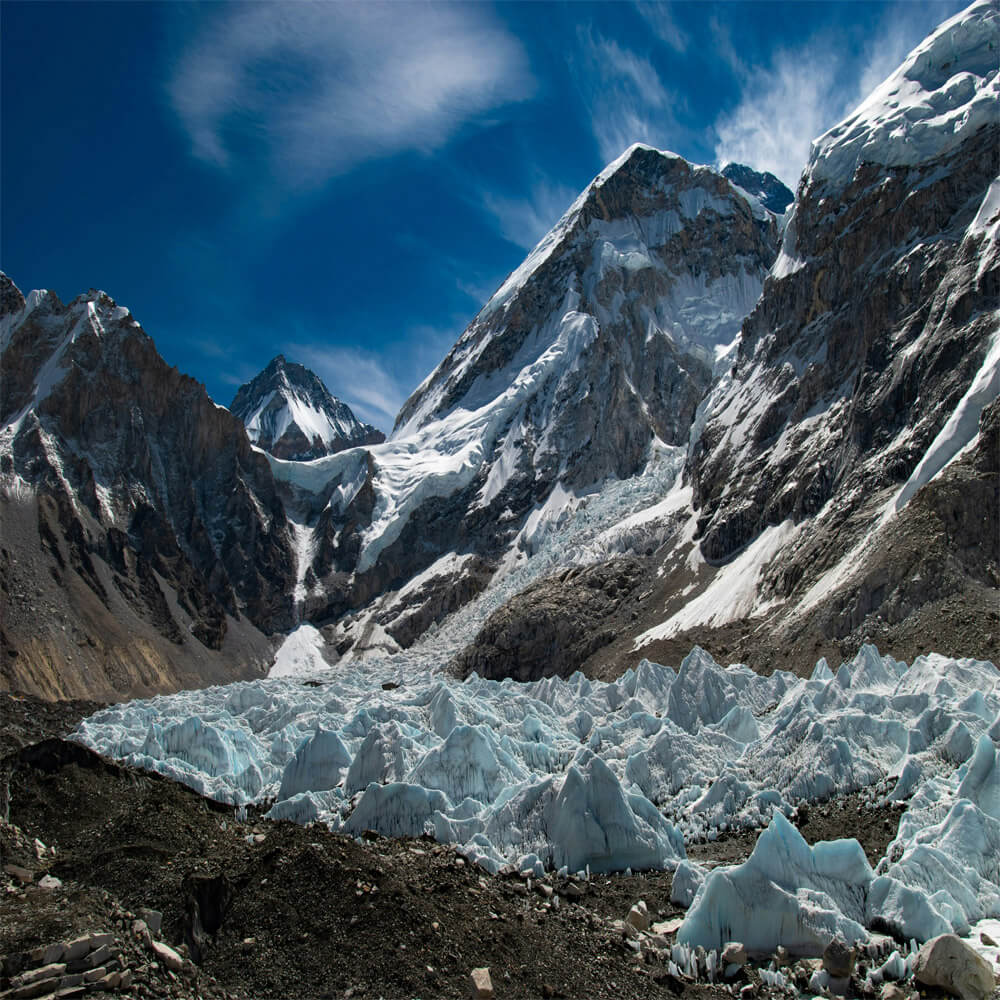
It is simple to see why Nepal is known as the "heart of the Himalayas." The country offers some of the world's most breathtaking Himalayan trekking adventures, with snow-capped peaks, deep valleys, and varied cultures making for an amazing tour. Nepal caters to all types of trekkers, from beginners on short treks to expert climbers on hard adventures.
Diverse Trekking Experiences in Nepal
Because of Nepal's diverse terrain, each trek is different. In the spring, you can hike through thick rhododendron forests, cross high-altitude routes with panoramic views of towering peaks, or visit secluded communities where customs have stayed untouched for decades. These activities elevate Nepal trekking tours beyond a physical challenge, allowing you to immerse yourself in local life and discover Himalayan culture firsthand.
High Altitude Trekking in Nepal
For travelers looking for true challenges, high altitude trekking in Nepalis unparalleled. Trekkers may see the world's tallest mountains up close on trails like the Everest Base Camp, Gokyo Lakes, and Manaslu Circuit, which rise over 5,000 meters. While high altitude necessitates proper acclimatization and preparation, the rewards include a sense of accomplishment and magnificent views that few places on Earth can equal. Experienced guides and well-organized excursions make these expeditions accessible to folks who have never done rigorous trekking before.
Best Mountain Treks in Nepal
Some of the best mountain treks in Nepal are located in Nepal, each with its own attraction. The Everest region blends cultural immersion with renowned peaks, Annapurna offers a mix of natural beauty and various terrain, Langtang Valley gives quiet landscapes with Buddhist legacy, and Upper Mustang or Dolpo allow glimpses into unspoiled, restricted Himalayan kingdoms. Each trek has its own personality, allowing hikers to select routes that suit their fitness level, hobbies, and adventure aspirations.
Accessibility and Infrastructure
Nepal succeeds at making trekking accessible. A well-developed network of teahouses, trekking organizations, and local guides makes even distant areas accessible and secure. From transportation to lodging, Nepal trekking tours provide structured choices for both individual visitors and group adventures, including expert guiding, permits, and logistical support.
With its natural beauty, cultural richness, and world-class trekking infrastructure, Nepal is unquestionably the finest place for Himalayan trekking adventures, high-altitude exploration, and amazing mountain experiences.
Popular Mountain Trekking Regions in Nepal
Nepal is a trekkers' paradise, with various landscapes, cultures, and Himalayan experiences. The country's hiking regions serve to all types of explorers, whether they like moderate treks, high-altitude adventure, or culturally rich settlements. Here's a closer look at the most popular regions and what they have to offer people looking for Nepal trekking experiences.
Everest Region: The Ultimate Nepal Adventure Holidays
The Everest region is the crown jewel of Nepal adventure holidays. This region, known for its iconic peak, Mount Everest, boasts some of the world's most stunning trekking trails. Trekkers can take the famous Everest Base Camp trek, which combines breathtaking alpine scenery, Sherpa culture, and old monasteries. Shorter options, such as the Everest View Trek, offer a less demanding option for those looking for Himalayan views of moderate difficulty. The location is suitable for high-altitude trekkers seeking a mix of adventure and cultural immersion.
Annapurna Region: Diverse Landscapes and Rich Culture
The Annapurna region is known for its diverse scenery, including subtropical woods, alpine meadows, glacial rivers, and panoramic mountain ranges. Famous treks such as the Annapurna Circuit and the Annapurna Base Camp trek provide opportunities to experience both nature and local culture. The terrain is accessible and offers guided mountain treks, making it ideal for both novice and experienced trekkers. Annapurna is also perfect for people seeking tea-house trekking, which combines comfort with real Nepal trekking experiences.
Langtang Region: Close to Kathmandu, Rich in Culture
The Langtang region is ideal for trekkers seeking a tranquil and less congested Himalayan experience. Trekking here provides beautiful forests, ancient Tamang villages, and close-up views of Langtang Lirung. The terrain is ideal for shorter treks or as a warm-up for larger trips, making it popular with families and first-time trekkers. Local guides provide important assistance, enriching "Nepal adventure holidays" with cultural knowledge.
Manaslu Region: Off-the-Beaten-Path Exploration
For those looking for a remote and challenging adventure, the Manaslu Circuit trekking is one of the most rewarding options. This walk features magnificent mountain scenery, Tibetan-influenced communities, and high-altitude passes. Because of its remoteness, Nepal trekking routes here necessitate meticulous planning, which frequently includes permits and expert guides. Manaslu is an excellent alternative for anyone seeking a tough yet culturally enriching journey in the Himalayas.
Each of these places offers a distinctive blend of natural beauty, cultural immersion, and adventure. Choosing the proper region guarantees wonderful Nepal trekking experiences while discovering the greatest Nepal adventure holidays with safe and guided alternatives provided by experienced operators.
Top Himalayan trekking adventures in Nepal
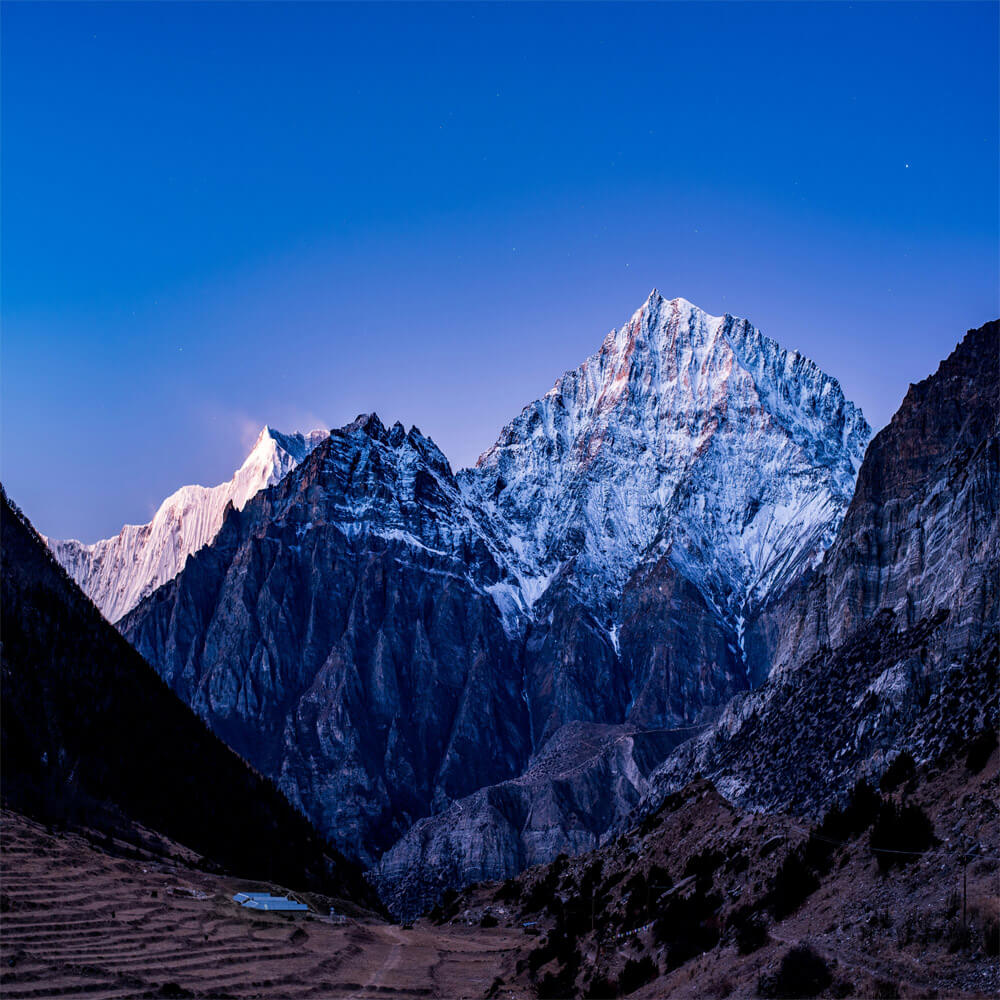
Nepal has a diverse range of trekking choices, from popular treks to secluded expeditions. Trekking in Nepal offers unique experiences like unspoiled landscapes, rich culture, and off-the-beaten-path trips. Here are some of the best mountain treks to consider:
Mount Everest Base Camp Trek
The Trekking to Mount Everest Base Camp is a must-do for trekkers all around the world. Starting in Lukla, the trail winds through Sherpa settlements, suspension bridges, and rhododendron forests before ascending to the famed Everest Base Camp at 5,364 meters. While this is not a restricted area trek, some areas require permits, and hikers benefit from acclimatization and instruction. The voyage blends spectacular Himalayan views with cultural activities, resulting in an amazing adventure.
Annapurna Circuit Trek in Nepal
The Annapurna Circuit trek provides a diverse terrain, ranging from subtropical woods to high alpine deserts. This journey crosses via Thorong La Pass (5,416m) and traditional settlements, offering an immersive cultural and environmental experience. Though the region is accessible, some sections require permissions, demonstrating Nepal's dedication to protecting nature and culture while encouraging adventure tourism.
Manaslu Circuit Trek 14 days
The Manaslu Circuit trek falls under the category of restricted area trekking in Nepal. It passes through isolated communities, terraced farmland, and pure waterways. The hike requires a Manaslu Restricted Area permit and a skilled guide. Trekkers discover traditional Tibetan Buddhist culture, magnificent mountain views, and difficult high-altitude paths, making it a rewarding experience for daring travelers.
Langtang Valley Trek 10 Days
The Langtang Valley trek is famous for its scenic beauty and cultural diversity. It passes through alpine woods, glacial rivers, and Langtang villages; nevertheless, permits for protection areas are required. Trekkers enjoy warm hospitality, breathtaking views of Langtang Lirung, and a moderate difficulty level that is appropriate for many people.
Upper Mustang Trek 14 Days
The Upper Mustang trek is a perfect example of restricted area trekking in Nepal. Permits are required because it is a former Tibetan Kingdom. The trek displays old monasteries, walled towns, and a stark desert terrain, providing a cultural and historical experience unlike any other in Nepal.
Kanchenjunga Base Camp Trek
The Kanchenjunga Base Camp trek covers the rugged eastern Himalayas and is part of restricted area trekking in Nepal. Trekkers encounter remote towns, deep forests, and huge peaks that necessitate special permits and guides. Its secluded location makes it excellent for people seeking privacy, adventure, and unspoiled Himalayan landscapes.
These treks highlight Nepal's diverse terrain, culture, and adventure opportunities. Restricted area trekking in Nepal enables visitors to discover secret kingdoms and inaccessible places while also benefiting local communities and conservation initiatives.
Mountain trekking routes in Nepal for beginners
If you are new to trekking but want to experience the Himalayas up close, Nepal provides various beginner-friendly mountain routes that combine beauty and comfort. One of the better possibilities is the Ghorepani Poon Hill Trek, which is a short but beautiful trek across the Annapurna region. It provides stunning sunrise views of Dhaulagiri and Annapurna without requiring high altitude. The Langtang Valley Trek is another excellent option it is near to Kathmandu, culturally diverse, and ideal for first-time trekkers.
For those looking for a combination of culture and nature, the Helambu Circuit Trek offers gentle trails through Sherpa villages and rhododendron forests. The Everest View Trek allows beginners to see Everest, Lhotse, and Ama Dablam without having to hike to the challenging base camp. Finally, the Mardi Himal Trek provides a tranquil experience with breathtaking mountain scenery and fewer tourists.
Each of these treks offers modest height, well-marked pathways, and pleasant teahouses, making them excellent for beginners looking to gain confidence. These routes promise unique memories, whether it is your first time trekking or a quick trip to the Himalayas. Nepal Trekking Routes provides well-planned and led excursions that guarantee comfort, safety, and unique local insight throughout your mountain trek.
Best Guided Treks in Nepal's Mountain Regions
Nepal's mountain regions are home to some of the world's most iconic trekking routes, and opting for a guided trek offers a safe, enriching, and smooth experience. One of the most well-known guided treks is the Everest Base Camp trip, which involves professional guides navigating high-altitude terrain, arranging permits, and providing cultural insights into Sherpa settlements along the way. Another popular option is the Annapurna Circuit, which offers a variety of landscapes ranging from subtropical woods to alpine meadows, with guides assuring acclimatization, safety, and logistical support.
For those seeking off-the-beaten-path activities, the Manaslu Circuit Trek and Tsum Valley Trek provide secluded beauty and Tibetan-influenced culture, but expert guides are required owing to few amenities and difficult terrain. The Langtang Valley Trek is another wonderful guided option, featuring gorgeous trails, local monasteries, and glacier vistas at a moderate difficulty level.
Guided treks not only increase safety in high-altitude areas, but they also enrich the experience with cultural anecdotes, historical background, and insider knowledge of local communities. Trekking with our company ensures coordinated logistics, experienced direction, and a stress-free adventure, making your Himalayan trek unique, no matter which route you take.
Trekking Grades and Difficulty Levels
Understanding the trekking difficulty levels in Nepal is vital before embarking on any Himalayan trip. Nepal has a diverse selection of treks, from easy day climbs to demanding high-altitude expeditions. Each trip has a distinct combination of distance, elevation gain, terrain, and climate, determining how physically and mentally challenging it is. Trekkers can categorize routes as simple, moderate, or difficult. Easy treks, such as the Everest View or Ghorepani Poon Hill trek, have shorter walking times and lower altitudes, making them excellent for beginners or families. Moderate treks, such as the Annapurna Base Camp or Langtang Valley trek, require more fitness and acclimatization owing to longer days and higher elevations. Challenging treks, such as the Everest Base Camp or the Manaslu Circuit, need extensive preparation, endurance, and competence with high-altitude conditions.
Altitude Sickness During Nepal Trekking
Altitude is a major role in determining difficulty. Altitude sickness in Nepal treks can affect even the most prepared trekkers. Headaches, nausea, and exhaustion are common symptoms that can worsen if you ascend too quickly. To reduce dangers, plan rest days, make gentle ascents, and stay hydrated. Professional guidance aids in detecting early warning signs and ensuring a safe voyage.
Mountain lodges and teahouses in Nepal
Accommodation along the routes also influences the difficulty. Mountain lodges and teahouses in Nepal offer minimal food and shelter, allowing trekkers to rest, recuperate, and acclimate. While facilities are simpler at higher altitudes, the presence of tea, hot meals, and shared accommodations considerably reduces the physical demands of daily trekking.
Sustainable Trekking in Nepal
Maintaining the environment while trekking is critical. Sustainable Trekking in Nepal promotes leaving no trace, supporting local communities, and utilizing environmentally friendly products. Trekkers can help preserve the beautiful Himalayan environments for future travelers by respecting local culture and reducing environmental damage.
Understanding these factors difficulty levels, altitude considerations, lodge accommodations, and sustainable practices helps trekkers prepare both physically and mentally. Adventurers may fully enjoy Nepal's mountains by selecting a trek that is appropriate for their fitness and experience, while also respecting local customs and the environment.
Essential Tips for Trekking in Nepal
Trekking in Nepal is a life-changing event, but proper preparation might mean the difference between a comfortable and a tough expedition. Here are the most important things you should know before hitting the trails, from timing your walk to obtaining the necessary permits and guides.
Best Time for Trekking in Nepal
Weather, visibility, and personal choice all influence the best time for trekking in Nepal. The two main seasons, spring (March to May) and autumn (September to November), provide superb trekking conditions. During these months, the skies are clear, the temperatures are reasonable, and the mountain scenery is breathtaking. Spring delivers blossoming rhododendrons and busy paths, while fall offers crisp air and panoramic views following the monsoon.
Winter (December to February) is also ideal for lower-elevation treks, however higher passes may be snow-covered. Meanwhile, the monsoon season (June to August) brings significant rain, which is ideal for exploring rain-shadow places like Mustang and Dolpo. Plan your walk during the appropriate season to ensure both safety and a more enjoyable experience.
Trekking Permits in Nepal
Before you begin your expedition, ensure that you have all of the essential trekking permits in Nepal. Most trekking areas require a TIMS (Trekkers' Information Management System) card, as well as particular area permits such as the Annapurna Conservation Area Permit (ACAP) or the Sagarmatha National Park Permit. Restricted areas like Upper Mustang, Manaslu, and Dolpo require special permits that may only be obtained from licensed trekking agencies.
These permits assist to protect the environment, benefit local communities, and assure trekkers' safety. Always bring photocopies and your passport when trekking, as checks are common along major routes.
Nepal Trekking Guide Services
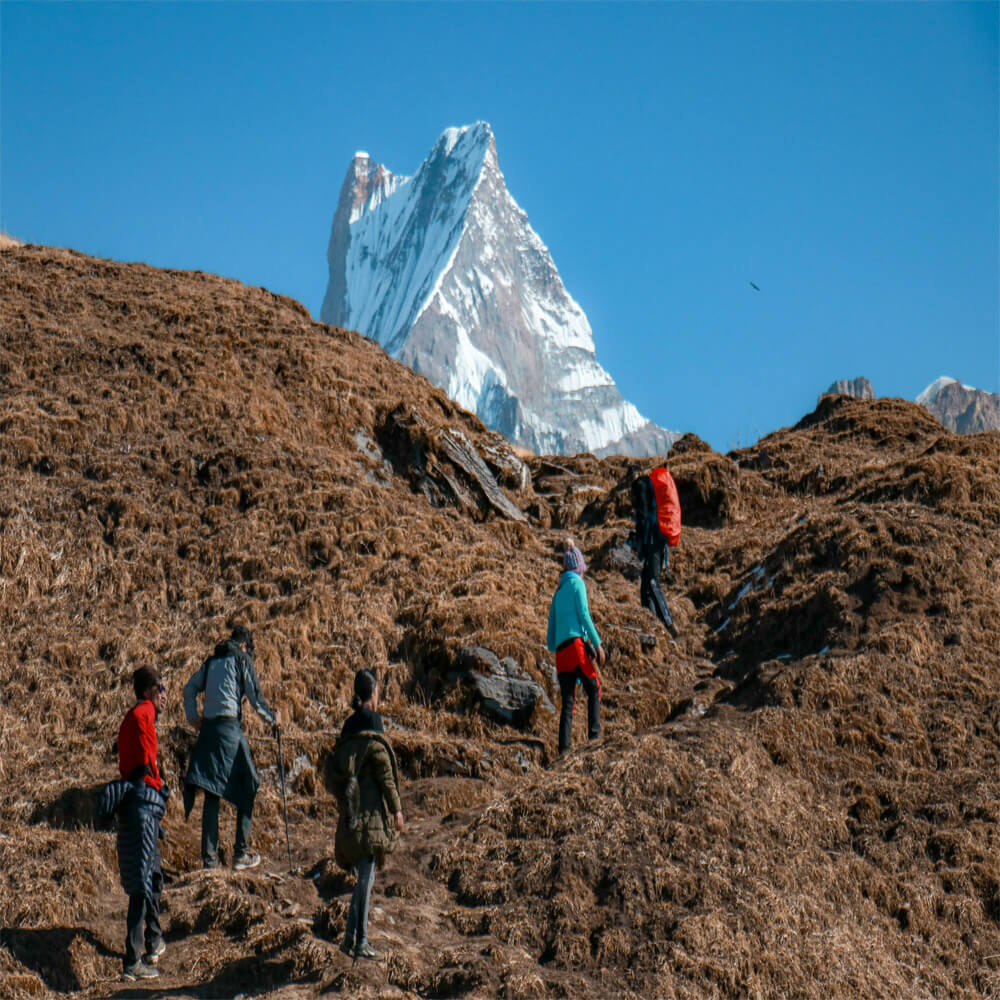
Hiring a qualified guide or porter can significantly improve your trekking experience. Nepal trekking guide services offer more than just navigation; they provide cultural understanding, assist with logistics, and assure your safety in high-altitude circumstances. Local guides are highly familiar with the terrain, including secret overlooks and reliable drinking water sources.
Porters reduce your workload, allowing you to appreciate the landscape without strain. Professional guides are strongly advised for distant or high-altitude climbs, as they are trained in first aid and emergency evacuation techniques.
Whether you are hiking alone or with a group, hiring an expert Nepal trekking guide offers a more enjoyable, safe, and enriching adventure through the Himalayas.
Cultural Experiences Along the TrekkingTrails
Meeting the People of the Himalayas
Every Himalayan adventure journey is about more than simply getting to your objective; it is also about meeting new people along the way. Trekkers discover genuine friendliness and learn about centuries-old mountain customs, from the warm grins of the Sherpa in the Everest region to the Tamang and Gurung villages in the Annapurna and Langtang valleys.
Immersing in traditions and monasteries
Many trails pass by ancient monasteries, chortens, and prayer flags set against dramatic Nepal mountain scenery. These symbols represent the strong spiritual bond between the country and its inhabitants. Participating in local festivals or observing daily traditions provides a genuine cultural trekking experience, blending spirituality with mountain living.
Exploring Remote Villages
For those seeking off-the-beaten-path treks, Nepal’s restricted and lesser-known regions like Upper Mustang, Manaslu, or Tsum Valley reveal unspoiled cultures and uncommon Himalayan lifestyles. Trekkers witness a way of life that is far apart from modern influences.
Cultural exchanges make trekking in Nepal a genuinely human experience, with each discussion, smile, and shared cup of tea enriching the trek and leaving lasting memories beyond the mountain scenery.
Preparation and Packing Tips for Mountain Trekking in Nepal
Physical Readiness for Remote Mountain Trails
Before you set foot on Nepal's remote mountain trails, you must prepare your body and mind for long days of hiking at high altitudes. Begin training a few weeks before with regular cardio, hiking, and strength activities. To imitate real-world conditions, gradually build your stamina by hiking nearby hills or carrying a backpack. Trekking in Nepal requires hard ascents and descents, thus stamina is essential for enjoying the experience without tiredness.
Packing for an Authentic Nepal Trekking Experience
Packing strategically can make a significant difference in your overall trekking comfort. Focus on versatile clothing layers for an authentic Nepal trekking experience lightweight base layers, a warm fleece, and a down jacket for cooler evenings. Bring durable trekking boots, moisture-wicking socks, and a dependable rain jacket, as the weather in the highlands can change suddenly. A headlamp, hiking poles, water purification tablets, and sunscreen are all must-haves in your pack. Do not forget to pack food or energy bars on the trail the simplest things can provide comfort on difficult paths.
Mental and Spiritual Preparation for the Himalayas
Trekking in Nepal is not just a physical challenge, but also a spiritual journey in the Himalayas. The calm trails, fluttering prayer flags, and friendly smiles of the locals encourage serenity and reflection. Prepare your mind to accept the simplicity of mountain living and let go of daily distractions. Pack a journal or pocket book to record your ideas and inspirations along the route. Remember, the trek is about more than just getting to your destination; it is about connecting deeply with the environment, culture, and your own inner resilience. Proper preparation guarantees that your Himalayan journey is a safe, meaningful, and life-changing event.
Sustainable and Responsible Trekking Practices
Respecting Nature and Local Communities
Trekking in Nepal's mountains is a privilege, not just an adventure. The routes traverse through delicate ecosystems and traditional settlements, so walk with care. Trekkers may help protect the environment by reducing waste, eliminating single-use plastics, and staying on defined paths. Supporting local tea cafes, purchasing locally created products, and learning about community customs are all little activities that have a positive influence. Respecting local traditions and cultural values promotes harmony between visitors and the people who call these mountains home.
Reducing Environmental Footprints
As the number of visitors to Nepal's trekking regions grows, so do the environmental challenges. Trekkers should take reusable water bottles and purification tablets instead of plastic bottles to decrease their environmental impact. Choosing lodges that use solar power or practice environmentally friendly waste disposal is another way to help. Walking instead of flying for short sections reduces carbon emissions. Simple measures like appropriate trash segregation and energy conservation can go a long way toward safeguarding the Himalayas' delicate balance.
Supporting Sustainable Tourism and Local Economy
Responsible trekking entails ensuring that tourism supports the local economy equally. Hiring local guides and porters through ethical businesses like Nepal Trekking Routes guarantees fair pay and safe working conditions. Choosing community-based trekking routes and staying in family-run hotels helps to spread tourism revenue fairly. Sustainable tourism also include training other hikers about conservation and leaving trails cleaner than before.
When done consciously, trekking transforms into an act of preservation and respect. We ensure that Nepal's breathtaking mountains, vibrant cultures, and pristine trails inspire future generations of adventurers by implementing sustainable and responsible trekking techniques.
Mountain Trekking in Nepal FAQs
What is the best time for mountain trekking in Nepal?
The best seasons for Mountain Trekking in Nepal are spring (March–May) and autumn (September–November). During these months, the weather is stable, skies are clear, and mountain views are spectacular. Summer monsoon (June–August) brings heavy rain and slippery trails, while winter (December–February) is cold and snow can block higher routes.
Do I need prior trekking experience?
Not necessarily. Nepal offers treks for all levels from easy, short treks like Everest View Trek to challenging high-altitude treks like Everest Base Camp. Basic fitness, stamina, and some prior hiking experience are helpful, especially for moderate or strenuous treks.
Are guides and porters necessary?
While not mandatory for all routes, hiring a guide and porter improves safety, navigation, and logistical convenience. For remote or restricted areas, guides may be compulsory.
What permits are required for trekking?
Most trekking areas require TIMS (Trekkers’ Information Management System) and national park permits. Restricted areas like Upper Mustang or Manaslu have additional permits.
How should I prepare physically and mentally?
Train with cardio, endurance, and strength exercises months before your trek. Acclimatization, proper gear, hydration, and a positive mindset are key to enjoying Nepal’s mountains safely and comfortably.
Conclusion: Mountain trekking in Nepal
Mountain trekking in Nepal is more than just walking through paths; it is a voyage into the heart of the Himalayas, where nature, culture, and adventure intersect. Whether you want to climb Everest Base Camp, walk through the Annapurna lowlands, or explore peculiar routes like Manaslu or Langtang, each trip has a unique tale and sense of success. The mix of breathtaking peaks, friendly hospitality, and spiritual peace makes every step worthwhile. With proper preparation and supervision, anyone who enjoys nature may enjoy the charm of these routes. Nepal Trekking Routes provides excellent local knowledge and personalized service to help you experience Nepal's mountains confidently and safely.

